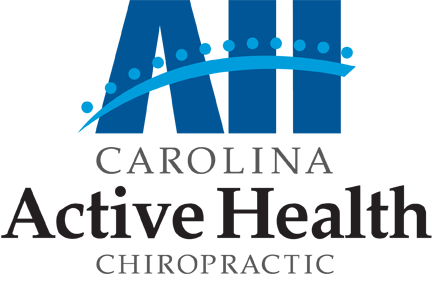Here are some exercises and information to help you stay your best!
/Common Disc Injuries We See in Our Office
The most common injury that we see in our office has to do with the disc that sits in between two vertebrae. The disc is a pliable material that's made out of cartilage and is surrounded by a gelatinous substance.
We'll typically see repetitive flexion extension with these injuries. If we stay in a nice, neutral, and stacked position, we'll see an equal distribution of that force in the disc on both sides. If we do a lot of rounding and bending and flexing from our back, it can weaken the cartilage on the posterior portion of the disc. This creates a disc bulge or disc herniation. One of the common treatments that we use is repetitive extensions. The idea is to shift that material back forward and reintroduce movement back into the spine itself.
We want to be mindful while bending over, as we want to try to stay as neutral as possible. We aren’t targeting a fixed position, as it's a range of motion that we’re seeking. The more stacked we are the safer our back is.
What is Stable Pain? We Explain!
At Carolina Active Health, a common topic of discussion with patients is stable pain. We always want to iterate that hurt doesn't always equal harm. Sometimes, when we're doing our rehab exercises, you might have a little bit of discomfort. That's okay, especially if it follows these two rules:
Keep your pain below a 4/10.
While you're performing your rehab exercise, let your pain guide you. If your pain is only a 2 or 3 out of 10, that's a manageable amount. We’re comfortable with our patients having these low levels of pain, as it’s important to reintroduce movement to the injured area.
Make sure that your pain does not increase during or after the activity
Stick to this rule, especially if you’re loading during these exercises. If you start a run, you might have a little bit of pain. It's about 2/10. You complete your run. It didn't accelerate or didn't get worse than that 2, and shortly afterward, it's not worse. This is a good level of stable pain to be at!
With stable pain, we encourage you to keep going with your activity. Still, always keep these rules in mind!
Hip Mobility Exercise We Use in Our Clinic
Hey everyone. We wanted to show another hip mobility exercise that we use here in the clinic. It's a variation of the classic pigeon that a lot of people do for stretching the backside of their hip. Couple differences, we're gonna start with a pad here on the ground. I'm gonna put the hip that I want to stretch that knee down on the pad, and we'll kind of get into that classic pigeon pose position.
Once I'm here, I'm gonna stay up on my hands. So lots of times when people do the pigeon, they want to come down here. We don't love that necessarily for the rounding portion of the low back, or we're gonna start here and I'm actually just gonna slide back and forth until I get a decent stretch in the back side of my hip.
I have a slider behind here, which is helping me do this, but you don't need it. You can play around with this as a variation, and then we can also work on kind of turning the pelvis. So if you kind of turn your pelvis down towards that leg or open it back up, we can also get a little bit of stretch in the hip, especially as you turn it down.
Play around with these at home and see if it helps open up the backside of your hip.
Our Favorite Knee Exercise
One of the common knee exercises that we do at Carolina Active Health is the Terminal Knee Extension (TKE). To start, take a band and put it behind your knee. Let the band pull your knee forward and then actively contract your quad to straighten your leg out. TKEs allow us to be in as much end-range knee extension without jamming it. Knee extensions are a great way to work on quad strength.
Next, we can target the Vastus Medialis Oblique (VMO) muscle. If we want to progress the exercise, we can add a six-inch elevated block to step up from. Maintaining the leg with the band on the block, raise your other leg up from the ground as your knee extends. Again, let the band pull on the back of your knee as you’re pressing up through the band.

